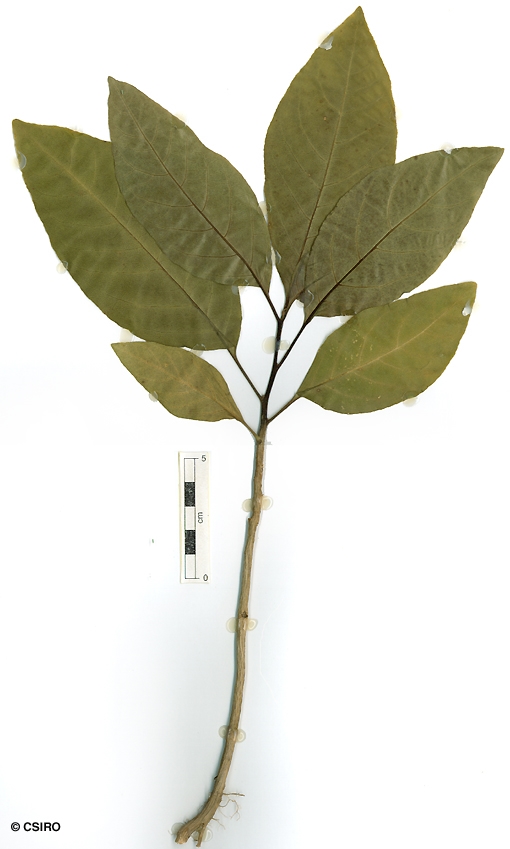Australian Tropical Rainforest Plants - Online edition
Pisonia grandis R.Br.



Brown, R. (1810) Prodromus Florae Novae Hollandiae : 422. Type: [given by Stemmerik, l.c. as R. Brown s.n. (BM: B, isotype) from the North Coast of Australia (Iter Australiense)].
Cabbage Tree; Gatae; Puatea; Pisonia
Usually grows into a tree but can flower and fruit as a shrub.
Cotyledons orbicular to almost reniform, about 15-21 x 16-31 mm, margins often irregularly crenate, petioles about 7 mm long. First pair of leaves ovate, pubescent on both the upper and lower surfaces. At the tenth leaf stage: stem clothed in very short pale brown appressed hairs just visible with a lens. Seed germination time 13 to 25 days.
This species occurs in quite dense almost pure stands of large trees on coral islands. The fruits are produced in great numbers. These islands are often inhabited by large numbers of sea birds particularly noddies which roost in the trees each night. At times the birds become covered with the sticky fruits and this has given rise to one of the common names viz. Birdlime Tree for this species.





